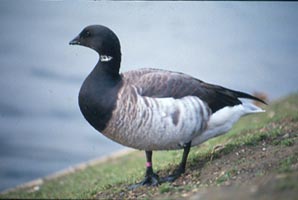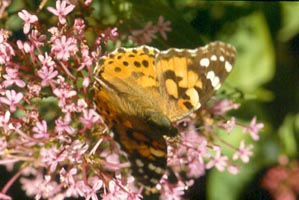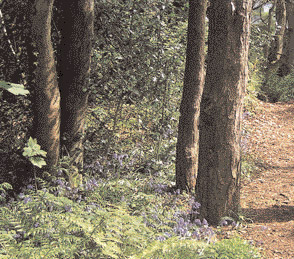| Dalkey Tidy Towns |
  |
| Dalkey Tidy Towns |
  |
Wildlife
Newsletter for the Township of Dalkey March 2010 - Michael Ryan |
|
HELPING
BIRDS IN THE SPRING |
|
| There’s
a great range now available of little video cameras which can be put in the
boxes to watch the birds, some nest boxes even come with camera attached.
You can connect the camera to your television and you can watch the adult
birds building their nests and laying eggs. You can watch the eggs hatching
and chicks growing and hopefully surviving to fledge and leave the nest. These
cameras cause no disturbance to the birds. Even if birds don’t nest
in the boxes this year they might next year after they get familiar with them.
They can also serve a very useful purpose even if they don’t nest in
them. In times of cold weather, like January’s big freeze, birds can
survive the night by crowding into nest boxes. Wrens, usually very aggressively
territorial, will jam into nest boxes together keeping each other warm. I’ve
mentioned before the artificial House Martin nest box we have outside our
kitchen which has had up to six wrens roosting in it in winter time.
|
|
| Of
course if there’s mature trees or suitable nest spaces in your house
the birds won’t need to use artificial homes. If you can, get hedges
and bushes cut before birds start building their nests in them. If you’ve
been feeding birds all winter don’t stop now. Although there will be
more natural food around they won’t turn down an easy meal. Later, when
birds have young in their nests, by providing food for the parent birds you’re
giving them more free time and opportunity to search out insect food for their
chicks. COMINGS AND GOINGS March is that transitionary month when our wintering birds are getting ready to head north while our first summer migrants begin to arrive from Africa. The Brent geese that fly from their roost on the Bull Island down to Kilcoole and Newcastle in Wicklow reach their peak numbers. They set off down along the coast every morning in little groups, from up on the hill you can see them crossing the bay then hugging the coast as they pass through Dalkey Sound. They return in much bigger groups, often over 800 birds in those classic flying V shapes (known as skeins) often flying over Dalkey Hill before dropping down sometimes hopping over the piers in Dun Laoghaire harbour and flying back to the Bull for the evening. They’re feeding up, preparing for their long journey back to their breeding grounds in Arctic Canada. Before they’ve gone we’ll have our first summer migrants in Dublin Bay. Sandwich Terns will be seen fishing offshore while Wheatears will be gathering their strength, feeding on insects on the coastline before heading inland. The first Swallows and Sand Martins are usually seen in March while male Song and Mistle Thrushes, Blackbirds, Chaffinches, and Greenfinches will be singing out their songs to attract mates and proclaim their territory. Gannets will be arriving to dive for fish in Killiney Bay before the month’s end and it was while watching them last year I saw my first swallow, on the 21st March although some individuals had been seen earlier in the month. Some early Bluebells will be coming into flower before the month’s end, soaking up the sunlight on the floor woodland floor before the leaves appear on the branches. Spring Springs Earlier If you had suspected that Spring is starting earlier then it used to apparently it’s now official. Eleven days earlier then it did thirty years ago according to recent research published and the process seems to be accelerating. This can spell serious potential problems for a lot of species particularly some species of birds which time their breeding so that there will be plenty of food available when their eggs hatch and they have hungry chicks to feed. If a bird is going to feed 70 caterpillars a day to each chick, as Great Tits will do, they have to make sure the chicks hatch just as the caterpillars are appearing. The new study compiled 25,000 records of springtime trends for 726 species of plants, animals, plankton, insects, amphibians, birds and fish across land, sea and freshwater habitats. It analysed them for changes in the timing of lifecycle events, such as egg laying, first flights and flowering, a science known as phenology. The results showed that more than 80% of trends between 1976 and 2005 indicated earlier seasonal events. On average, the study showed the seasonal timing of reproduction and population growth shifted forward by eleven days over the period, and that the change has accelerated recently One study found that oak trees were producing leaves 0.9 days earlier each year, while another found blue tits had changed their time of egg laying by 0.3 days a year. Other research found that hazel flowered a day earlier, and orange tip butterflies took their first flights 0.7 days earlier. |
 Bluebells |